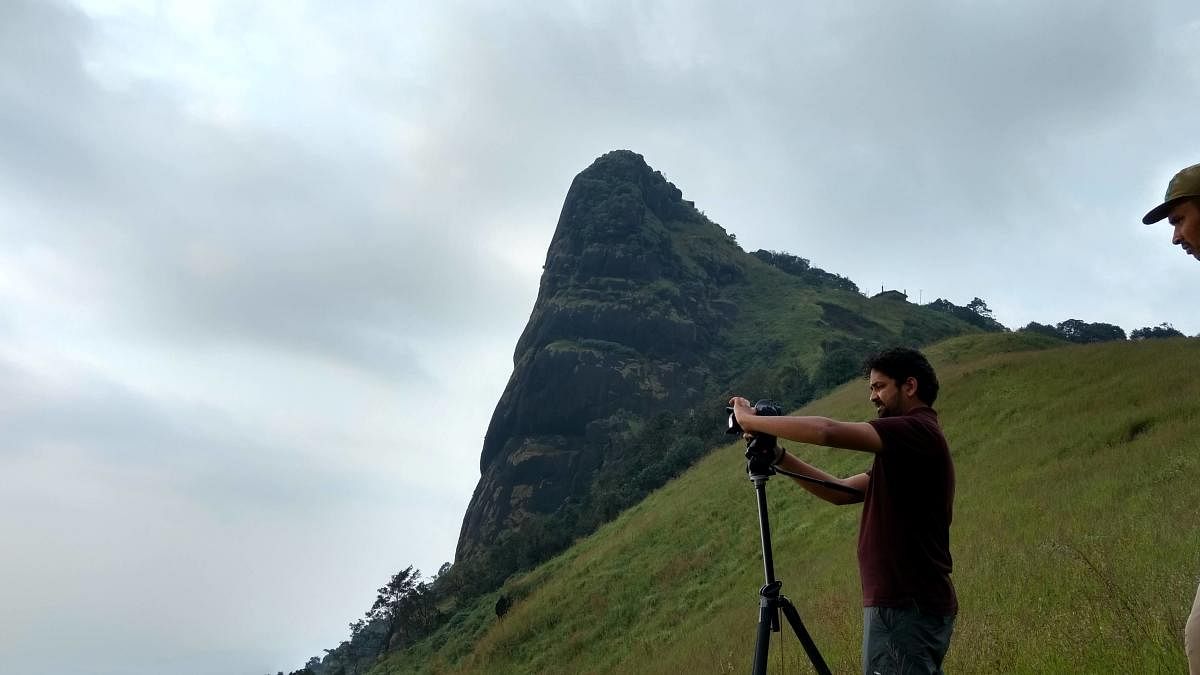

Somewhere in the remote corners of Western Ghats, in the midst of never-ending sholas and floating grasslands, there is a wonderland popular among trekkers. Many may have heard about this living paradise, some would have read about the tragedies that befell this land in the form of mining, but not many know that this paradise has regained its lost glory as one of the crown jewels of Western Ghats.
Located to the south of the holy shrine of Sringeri and towering over the tropics of Dakshina Kannada at the tri-junction of Chikkamagaluru, Dakshina Kannada and Udupi districts, Kudremukha is the second highest peak of Karnataka at an altitude of 1894 metres above sea level. Several high peaks and long grassland-
laden ridges enclosing the national park turn it into an ecological wonder.
Nature’s wonder
Being one of the largest protected areas of the tropical wet evergreen forests in the Western Ghats, it was in this heaven that I was lucky to have arrived at the peak of monsoons, with pouring rains and dense mist all around. It was in the middle of the day that I reached Bhagavathi Nature Camp and it began raining immediately. The cicadas fell silent with the rains and I could see the clouds silently roll into the campsite.
I walked up to the Bhadra and could see the river in spate. The trees were sparkling and everything looked fresh and green. I was just as happy as a wandering soul could possibly be and could think of nothing else. However, there was work to be completed and we were taken to see the forest areas. My wondrous gaze only grew bigger by the minute. The vehicle which took us suddenly turned into the adjoining grasslands and we entered a completely different world.
Wide expanses of grass-laden hilltops, patches of shola forests providing a deep contrast to the bright green grasses, the sambar deer startled by our sudden arrival and the sheer force of nature exuding in her purest form. We drove on and on and reached the highest point in that range where a 360-degree view of the gigantic manifest bloomed all around. Everywhere, as far as our eyes could dare to contrast, there were rolling hills, mighty peaks and wilderness all around. I could have become a poet at that moment but then I remembered to take a few photographs.
Even the camera refused to cooperate for it could not focus on the subject which was bigger than the widest lens humans had ever made. Kudremukha National Park strikes its claim as one of the gems of the country and at that moment, I could see why Eravikulam in Kerala, Mukurthi in Tamil Nadu and Kudremukha in Karnataka need to be preserved for eternity.
There was a stunned silence on the way down and everyone in the jeep was lost in their own personal perceptions of heaven as nothing could possibly be compared with the sight we have had. The forest had made believers out of us when all of a sudden, there was an alarm call. We stopped and listened to the cacophony of the macaques and a solitary langur for some time. Surely, a tigress was walking past us, somewhere close by, surely, she must have seen us and preferred to give us the royal ignore.
The excitement at being close to the most majestic of them all made us agree on one aspect, that the interests of those who had been mining in this region for close to 25 years have finally been defeated. It is unfathomable to believe it now but at one point in history, the mines of Kudremukha which receives an annual rainfall of about 7000 mm was the highest rainfall received for any similar mining operation in the world. And the scars that the mining left could be felt for kilometres downstream as the sediment discharge was unduly high and practically unmanageable for the industry involved.
The efforts of dedicated naturalists and environmentalists have finally ensured that nature reclaims her rightful territory and the tigress her own. Kudremukha is safe and sound and what scars remain of the mining are important reminders that it was a mistake to ravage this beautiful land.
The trip ended on a sombre mood though there were many treks that followed. Trekking to the Kudremukha Peak was a unique experience and so was the walk to the nearby Kurinjal Peak through some of the densest sholas that the subcontinent has. It was ultimately two days of being soaked in nature’s finest, and two sights stand out.
The view from the top that provided a complete vision of the park and evidence of slow revival being made to the denuded hills after the mining stopped.